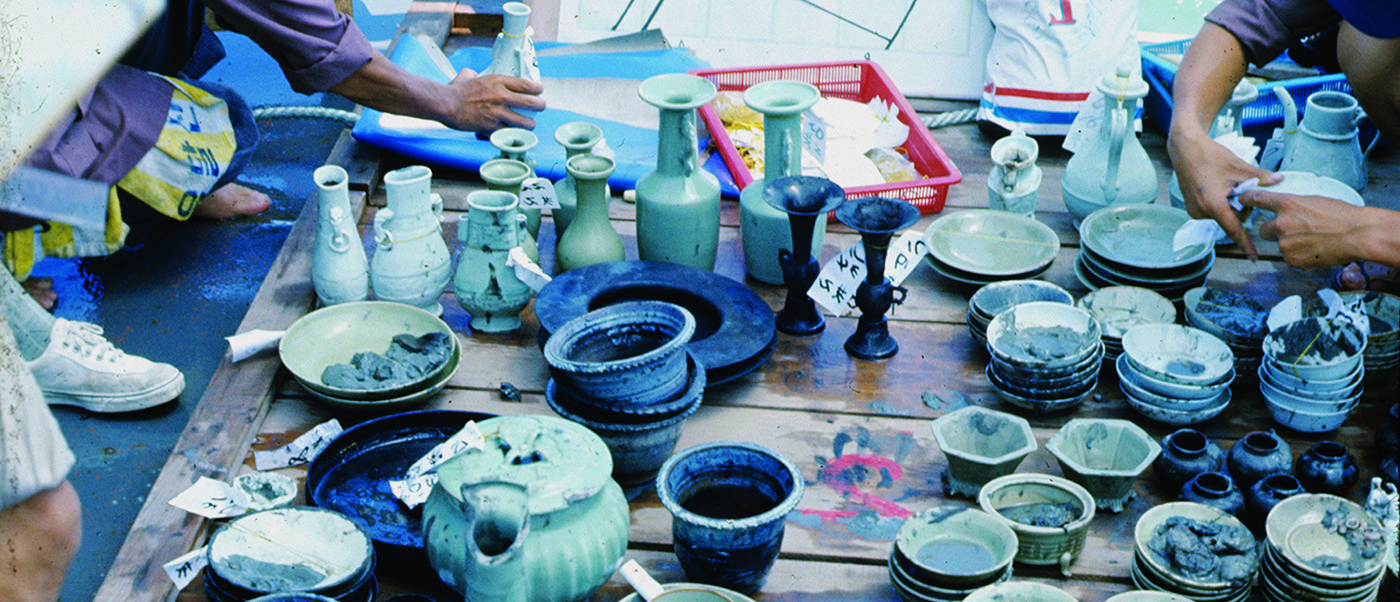The navy divers working on the Shinan wreck had it tough. The mud made it impossible to see what they were doing, so they had to search in total darkness using just their hands. In the winter it got so cold, their chattering teeth would sometimes bite through the mouthpieces of their scuba kit.
 Some of the Shinan ship’s precious cargo. Photo from the National Research Institute of Maritime Cultural Heritage, Republic of Korea
Some of the Shinan ship’s precious cargo. Photo from the National Research Institute of Maritime Cultural Heritage, Republic of Korea
These cold, muddy conditions were awful for diving, but great for preserving the ship’s ancient timbers. Shipworms ate all the parts above the mud, but the buried timbers remained largely untouched.
The mud also saved some wooden cargo crates. One had a grid carved into its lid – the crew had turned it into a board for the game ‘Go’. Go is one of the oldest board games in the world, originating in China around 4,000 years ago. It’s still very popular today – have you played it?
Personal objects like this show how the crew spent their free time; they were gamers!
Shipwrecks can teach us more than just boat design and trade routes; we can learn about the people who lived, worked and died on these different vessels.